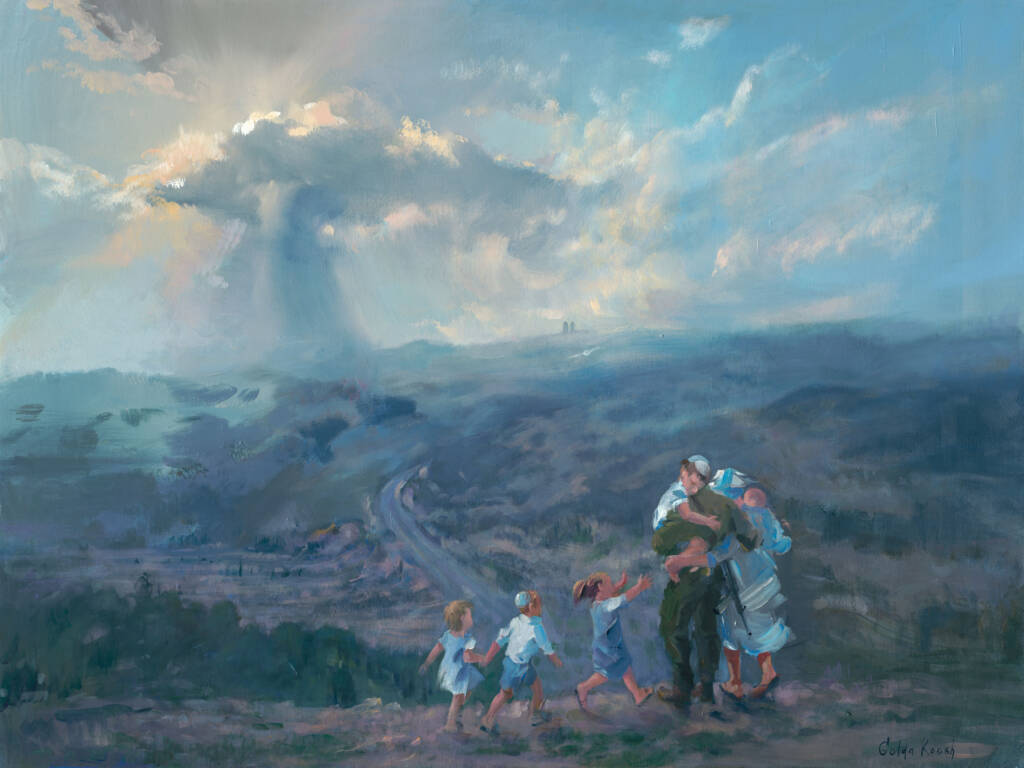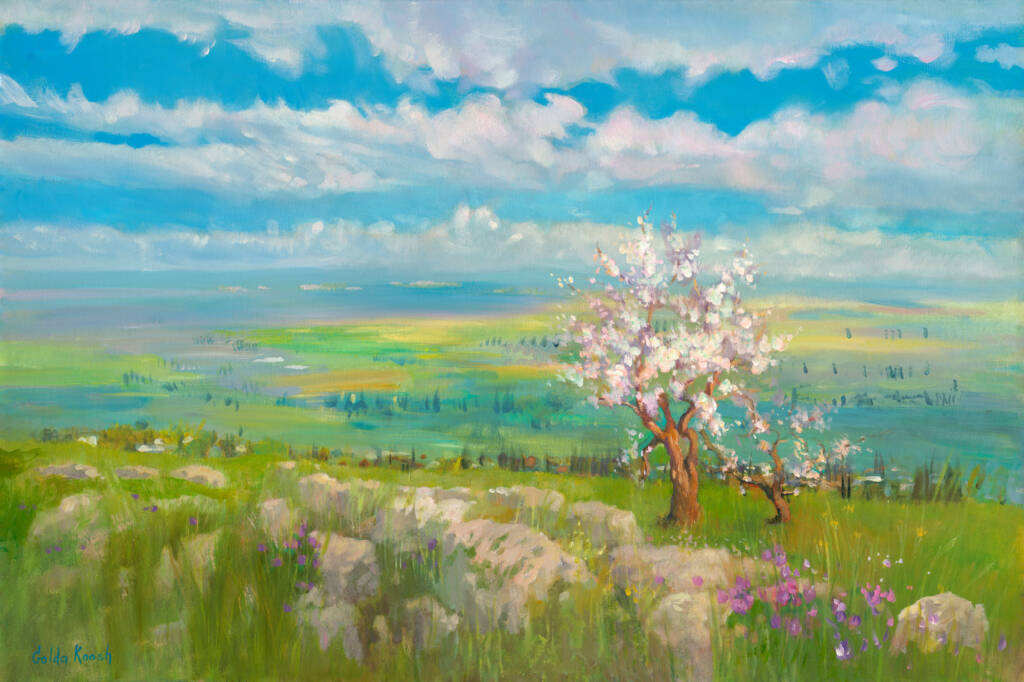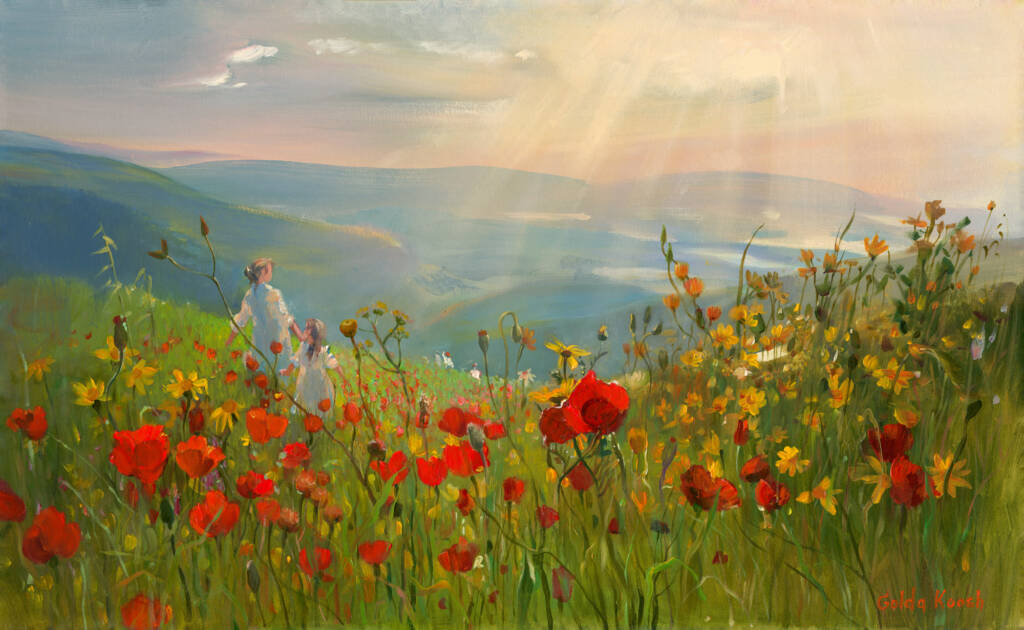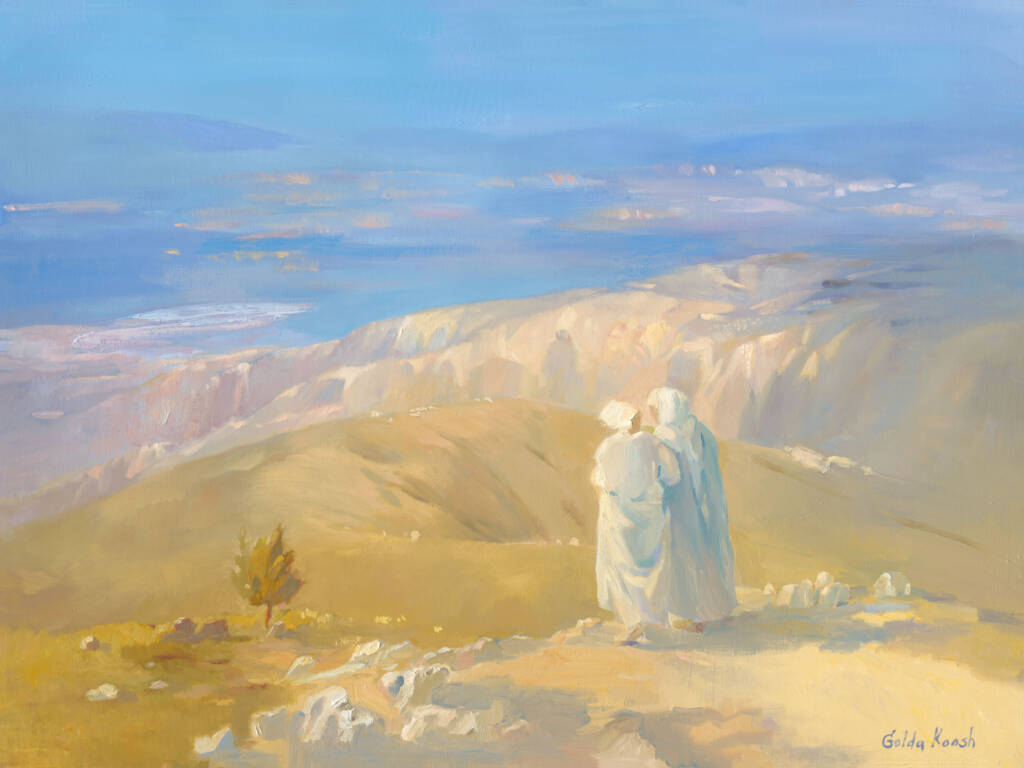For Golda Koosh, the land of Israel is more than a setting, it is a living, breathing presence that fuels her creativity. Her deep connection to the land emerges through her art, especially in her Israeli landscapes, where each brushstroke is layered with emotion, memory, and reverence. These paintings are not simply visual portrayals of hills and valleys. Rather, they are sacred meditations on the bond between land and spirit.
Finding Inspiration in the Everyday
Koosh’s move from Moscow to Jerusalem marked a turning point in her artistic journey. The light, the colors, and the atmosphere of Israel immediately awakened something within her. Suddenly, the landscapes were not just backgrounds; they became central characters in her work. With every walk through the hills or glance at the sunrise, a new idea for an Israeli landscape painting would emerge.
The Sacred Within the Natural
One of the most beloved qualities of Koosh’s art is her ability to blend spirituality with nature. In her painting Hills of Heritage, Sunset of Hope, a religious family stands together on a hillside, gazing out over the rolling terrain. The setting sun bathes the land in warm light, creating a moment that feels both timeless and sacred. Here, Koosh uses the physical beauty of Israeli landscapes to convey something eternal, the enduring spirit of faith and family.
In Eternal Landscape: The Hills of the Holy Land, Golda Koosh captures the timeless majesty of Israel’s terrain. Rolling hills stretch across the canvas, painted in layers of soft earth tones and gentle light. This piece is not tied to a specific moment in history, it represents all moments. The hills become a metaphor for continuity, strength, and divine presence. Whether viewed at sunrise or twilight, this painting evokes the unshakable connection between the Jewish people and their homeland. It is a quiet, powerful homage to a land that holds memory, meaning, and spiritual promise. This is a perfect example of how her Israeli landscapes capture spiritual moments rooted in the land itself.
Bridging Past and Present Through the Land
Koosh’s Israeli landscapes are not only personal, they are also deeply historical. Each painting serves as a bridge between the past and present. In works like On the Way to the Kotel in Jerusalem, the viewer can almost hear the footsteps of generations past. The ancient stones, the towering trees, and the quiet paths all speak of resilience and continuity.
Another example, Children of the Land, shows young girls running through a field of red calanit flowers under a hopeful sky. Inspired by the national flower of Israel, this painting expresses joy, freedom, and the next generation growing strong in the land of their ancestors. The land, once a place of wandering, is now a place of home.
Why Collectors Connect to Israeli Landscapes
Art collectors around the world are drawn to Koosh’s Israeli landscapes for their unique combination of beauty, history, and meaning. These are not generic scenes, they are personal visions filled with love and pride. They speak to those who feel a connection to the land, whether through ancestry, faith, or admiration.
Each painting offers a moment of stillness. A glimpse into the soul of Israel. A visual prayer for peace and purpose. That is the power of Koosh’s landscapes; they transform ordinary scenes into sacred experiences.
A Lifelong Devotion to the Land
Golda Koosh continues to paint the landscapes that surround her, never tiring of their beauty or symbolism. For her, Israel is a constant source of inspiration. With every new painting, she deepens her relationship with the land and shares that connection with the world.
Through her Israeli landscapes, Golda Koosh invites us all to walk the hills of Jerusalem, breathe in the sunrise over Judea, and witness the sacred through the everyday. Her art is not only a celebration of place, but it is a tribute to spirit, memory, and faith.







